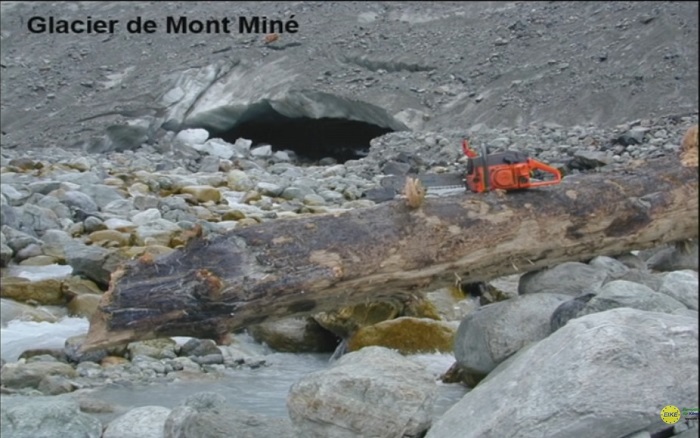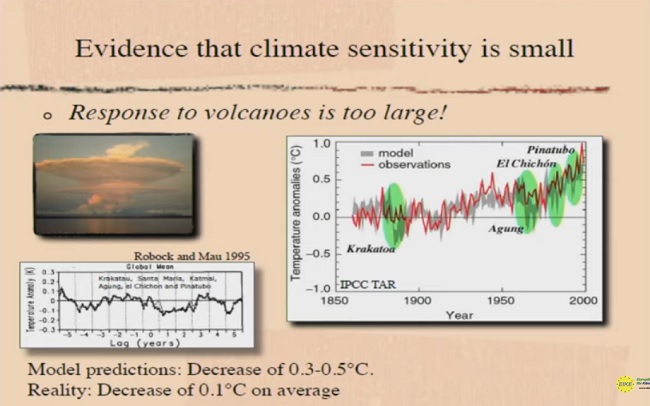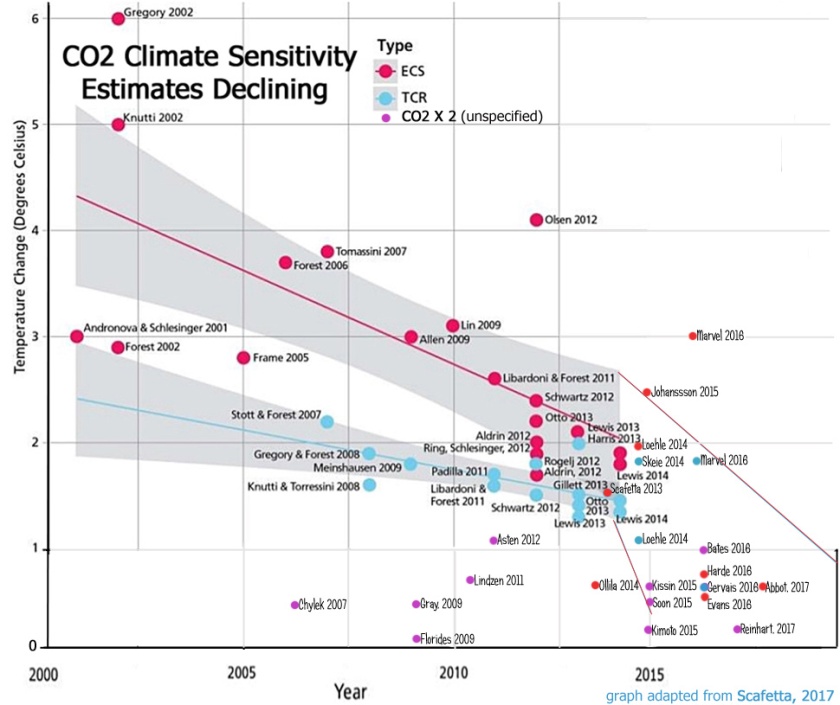(Zur deutschen Version dieses Berichts)
Last weekend, the climate conference of EIKE took place here in Munich. I went there to listen to the following lectures:
 In this blog post, I summarize these lectures and add links to the video clips for you to follow the lectures on your own and in full detail (Only the first talk was in German and is not easily accessible for most of the international public).
In this blog post, I summarize these lectures and add links to the video clips for you to follow the lectures on your own and in full detail (Only the first talk was in German and is not easily accessible for most of the international public).
Christian Schlüchter, Switzerland
Prof. em. Christian Schlüchter is a geologist and has studied the glaciers of the Alps in great detail. He reports the findings of very old timber in and below glaciers and what those trees taught him about the glacial epochs of the Alps:

The video clip of the 40 minute talk (in German) is available here.
One of the most intuitive finds of Schlüchter’s is this huge tree trunk, found at a glacier tongue (see the most beautiful glacier snout behind!).
This place nowadays is clearly above the limit of vegetation and still there is this tree which attracted Schlüchter’s curiosity and fuelled his research: How old is it? Where and under what conditions has it grown and why is it here:

The first part of his humerous talk covered how such records (timber, turfs, insects etc) have been found and age dated using 14C as a standard method.
The most important slide of his talk shows the last 12,000 years: lower scale from 10,000 BC to 2,000 AC. At the top, the summer temperature deltas compared to 2005 are shown, in the lower half the glacier extent compared to 2005:

Long periods of time in the last 12,000 years, temperatures were higher than in 2005. Early on, from 10,000 to 8.800 BC, and again in the last few hundred years temperatures were significantly lower.
In color, he shows fossil records of his work and those of other research groups all over the world (KGI=King George Island, SVA=Svalbard, CUM=Cumberland Peninsula, SJ=Schnieder Joch/Switzerland). Among his fossil records is also a well-preserved wasp (German: Die WESPE) found in a junk of turfs from under a glacier. The most renowned fossil record, of course is ‚Iceman‚, Europe’s oldest known natural human mummy, found on a glacier at the Italian/Austrian border in 1991.
The key message from this slide is that all of these records were left in times when the alpine glacier extent was smaller than in 2005.
Warm periods: more life
The timberline was at least 300 meters higher which indicates a minimum of 1.8° C higher temperatures. An example of this gives Hannibal, who managed to cross the Alps with elefants because the higher regions were much less covered by ice than in recent centuries.
Warm periods: more civilization
As his summary, Schlüchter gave the following facts:
- More than 50% of the last 11000 years alpine glaciers were smaller than 2005
- This fact he baptized ‚dominance of the Hannibalistic world‘
- Alpine glaciers have shown huge dynamics
- events of glacier growth were fast and short
- the little ice age (from the end of the medieval warm period to about 1850) was the longest glacier extension since the last ice age 12000 years ago
- every warming followed an accelerated course
At the end of his talk, Schlüchter was asked whether and when the Himalayas glaciers would be ice-free as suggested by some. He answered that he does not do prognostics, obviously not very interested in getting into the hottest climate debates.
Find more information about:
Nicola Scafetta, Italy
Nicola Scafetta is an italian physicist und climate modeller who works at Naples university. He is well-known for his criticism of IPCC climate models and, of course not uncontested for creating his own climate models and comparing them to IPCC results. His talk in Munich again took aim at the weaknesses und faults of IPCC climate models:

His talk took 52 minutes and is available here.
He started by discussing the climate forcings in IPCC models and noted that the solar component they introduce in the models ( I marked that with a blue frame) is negligible compared to anthropogenic forcings:

Then he presented the results of the IPCC models which, at first sight, support them and are promoted by the IPCC:

After a short excursus why the argument does not hold as much water as suggested he discussed several areas where the climate models according to him are constantly failing. A key case is the medieval warm period, which he showed here together with the Roman warm period and the modern warm period. This tells us that he does not, of course, deny climate change as such:

On this slide, he states that the IPCC models (light blue line) fail to reproduce the medieval warm period (red real data) in the left part of the chart:

He notes that the models tend to reproduce the notorious ‚hockeystick‘ shape and therefore fail at the medial warming bump!
(This is an echo of a very old climate change controversy, documented here)
He also shows similar failures for longer periods and demonstrates that the ulimate reason for this is that the models are not capable of reproducing climate variations which follow periodic solar activity.
Therefore, ten years ago, he contrasted his own model forecasts, which take those into account, (black line) to those of the IPCC (dashed blue line), which leads to the climax of the talk:

Ten years later, after noting that the El Nino spikes in the real data (black line) are a separate problem, he left it to the audience to judge which model was better : IPCC 2013 models (green ribbon area) or Scafetta 2013 model (yellow ribbon area):

Well, they both are not perfect which denies the claim that the „science is settled“. But Scafetta has a point if only he represents data and forecasts correctly.
After this, his summary is not much of a surprise:

Nir Shaviv, Israel
Nir Shaviv is a well-known but moderate climate skeptic. Besides the lecture on alpine glaciers by Christian Schlüchter, he was my main reason to choose this half day from the conference program:
 The video of Shaviv’s 39 minutes talk is available here.
The video of Shaviv’s 39 minutes talk is available here.
Shaviv continued where Scafetta had ended and discussed the IPCC world and its errors.
For a start, he presented its lines of thinking:

Next, he discussed the validity of each building block, marked the errors und deconstructed the standard picture. He emphasized that the climate sensitivity of CO2 is a priori unknown and largely overestimated by the IPCC:

He judged it a severe shortcoming that other forcings than green house gases are ruled out by the IPCC: the sun!
He pointed out that the IPCC overestimates climate sensitivity of CO2 at the expense of solar influences. While IPCC modelers managed to hide this for 20th century data, it will lead to a serious overestimate of temperatures in the 21st when solar influences will be cooling. He therefore expects a much lower temperature rise than predicted by the IPCC, a modest (and manageable) one:

He presented several arguments why climate sensitivity of CO2 is (drastically) overestimated. As a first example, known temperature changes by previous volcano eruptions have been much lower than the models suggest:

Second, much higher than today’s CO2 concentrations in the history of the earth had apparently very little to no impact on temperatures (which is in fact a standard argument for every amateur climate skeptic):

Using physical arguments Shaviv manages to set an upper limit for the climate sensitivity of CO2. This should convince the audience to accept additional forcings behind the 20th century temperature rise. Like Scafetta he points at a solar driven forcing.
In this way, self-assured Shaviv arrives at a scathing judgment about climate science (red frame is mine):

To finish, he points out that the link from solar activity to earth temperature need not be direct solar irradiation but could be more indirect interactions. This leads him to hand over to Henrik Svensmark with whom he apparently is closely harmonized, because Svensmark presents a possible interaction of solar activity with earth climate from his own research:
Henrik Svensmark, Denmark
Henrik Svensmark is a Danish physicist und climate researcher. As other speakers he reports that he finds it more and more difficult to raise funds for his research because its results contradict the IPCC position:

His talk of 32 minutes is available here.
The mechanism he investigated is the influence of cosmic rays on the creation of clouds. This happens through creation of ions which serve as clouding seeds in the atmosphere:

By experiments and also by correlation measurements Svensmark has investigated this mechanism of cloud creation by cosmic rays.
This is interesting because IPCC researchers cite reduction of cloud creation by global warming as a possible positive feedback mechanism which could escalate global warming to catastrophic levels. Svensmark assumes that it provides a way how solar activity, via its solar winds, has a climate impact on the earth which adds to the direct impact of solar irradiation to the earth.
The importance of cloud creation as a cooling climate factor is thus undisputed, unlike Svensmark’s conclusion:

As Shaviv has oulined in his talk, Svensmark’s research opens an indirect channel by which solar cycles could have more impact on the earth’s climate than the IPCC admits. Solar winds would modulate cloud creation with the typical periodicities of the sun’s cycles. Cloud creation by cosmic rays could thus help to close the gap between climate models and real climate data which Scafetta demonstrated in his talk, e.g. the failure to reproduce the medieval warm period.
Scientific summary
As a physicist I found all 4 talks interesting. They demonstrate that real and sophisticated science on climate was presented at that conference. Nothing suggests that this is less serious or valid science than anything I experienced during my time as a master and Ph.D student in physics. The presented results make it seem rather improbable that the climate models of the IPCC are complete, beyond any doubt or worth a 97% consensus.
Intimidation, Relocation, Police protection
When this conference was scheduled in its usual location, a Munich hotel, a media campaign smeared it as anti-scientific, right-wing and even for ‚killing people‘ by denying climate change. The most prominent newspaper pushing that campaign was the Berlin based newspaper Tagesspiegel, which published several articles smearing the conference. Shortly before its start, the Munich based Umweltinstitut published an open letter calling the hotel to cancel the conference which it did after a group of activists entered its lobby and smeared the conference and upset guests. The hotel management declared that
„Denying climate change is not compatible with NH group values“
Find a rather lurid report of the events in English here. Unfortunately, there are no other reports in English language media which represent the events in a less martial way.
The conference, however, took place in a different location and under police protection, but in an orderly way and without any serious troubles.
Not only was a police car placed outside the entrance when I entered and left the places:

but also inside the building there were security people and police officers.
I find it rather bizarre that a conference discussing the contents I have heard (and presented in this report) should find it difficult to find a location and should even need police protection.
This is clearly an attack on freedom of science and speech by a very small number of activists and, in the first place, by publicly funded ‚green‘ institutions and national media. One of the frequent reprovals in national media was that the conference organized by EIKE was in connection with the Heartland Institute and its International Climate Conferences.
The spirit of smearing and outlawing that is going on in the climate ’scientific‘ debate as around the Munich conference is best described in this conversation between ex-US-Senator Ron Paul and climate scientist Judith Curry:
„Curry: I think that the solar influences are not given sufficient attention“
Update 23.12.2019
Comparisons of Scafetta’s with IPCC models can be found here.
There also seems to be a strongly decreasing trend in estimates of climate sensitiviy which is a crucial argument not only by Scafetta but also for Nir Shaviv’s reasoning:

Note that a


 In this blog post, I summarize these lectures and add links to the video clips for you to follow the lectures on your own and in full detail (Only the first talk was in German and is not easily accessible for most of the international public).
In this blog post, I summarize these lectures and add links to the video clips for you to follow the lectures on your own and in full detail (Only the first talk was in German and is not easily accessible for most of the international public).






















